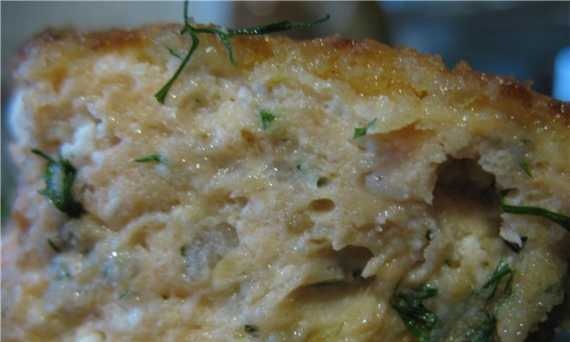|
 Not everyone, probably, wondered how the word was formed in our language "slurp"... And it owes its origin to the word "bread". Why? Not everyone, probably, wondered how the word was formed in our language "slurp"... And it owes its origin to the word "bread". Why?
Because since antiquity, the concept of "bread" meant all the crops that our ancestor sowed and harvested (except, probably, only legumes). This, obviously, is the root meaning of the proverb in the title of this chapter, a meaning that is now perceived somewhat distorted.
When the peasant, after hard work, rejoiced at the sprouting and gained faith that this year he "will be with bread", this did not mean at all that a good harvest of rye or wheat is expected. All our folklore testifies to the fact that when a person had to move away from a broad concept inherent in a word, to a more specific one - a product baked from flour, an explanatory word was usually used nearby. "Good porridge is our mother, and rye bread is our dear father"... In a similar connection, we find other explanations: "white", "the black", "loaf", "a piece", "Hunk", "Hunk" etc.
And think about the essence of the famous saying "Bread is the head of everything", which was completely out of place previously hung out in the form of posters, banners in bakeries, bakeries and canteens. Is the product made of flour (loaf or loaf) really "Everything is in the head"? It's funny. No, this is not what our ancestors wanted to tell us.
Now this truth, deeply realized by them, expressed in a figurative form, could be deciphered as follows: for us, the descendants of agricultural peoples, grain crops are the basis of nutrition, and in this centuries-old tradition lies the reserved key to our well-being, and to our survival in difficult time.
It is interesting to remember how our great-great-grandfathers fought for this tradition, not letting into their fields not only the overseas "damn apples" - tomatoes and potatoes, but sometimes even wheat. What did she get it for? The answer is given by an old Russian proverb: "Wheat feeds by choice, and rye - all of them"... Before the pundits, the people understood that they lived in "Zone of uncertain farming"... After all, he himself went through an instructive and harsh school in his history, when death by starvation, with every crop failure, mowed hundreds of thousands of Russians in all centuries of their existence, even from the princely times. Is it any wonder that the rather capricious wheat preferred the unpretentious rye-nurse, the attitude to which was a loving and tender testimony to this - the darkness of sayings plus the very kinship of words: "rye", "give birth to", "Harvest".
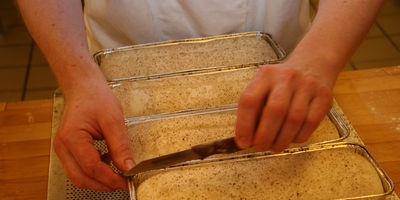 The testimonies of foreign military doctors who, visiting the hospitals of the tsarist army in the last century, were amazed at the fact that the wounded soldiers are completely satisfied with bread, kvass and onions, and occasionally porridge, are also interesting, and, moreover, they recover well. This is what eating traditions mean, when the body has the genetic ability to absorb all the necessary nutrients from a rather meager group of foods. The testimonies of foreign military doctors who, visiting the hospitals of the tsarist army in the last century, were amazed at the fact that the wounded soldiers are completely satisfied with bread, kvass and onions, and occasionally porridge, are also interesting, and, moreover, they recover well. This is what eating traditions mean, when the body has the genetic ability to absorb all the necessary nutrients from a rather meager group of foods.
One of the heroes of a popular film about the war - a soldier called up from Central Asia - sadly sneers, addressing the foreman: “Breakfast - millet, lunch - millet, dinner - too millet... Uzbek, is he a bird, or what? " Perfectly noticed by the scriptwriter, a vital detail!
But back to the surprise of foreign physicians of the last century. If they only knew what real Russian kvass is, and even more so Russian bread! In the old days, after all, black bread from
rye flour was the main "Russian bread"... Our ancestors apparently knew about its nutritional benefits over wheat long before science drew the same conclusion. If you keep in mind "bread" in the collective sense, that is, food from cereals, our ancestors were not mistaken in their preference here.
The energy resource of such food is very strong and, most importantly, the human body is ideal "Well-disposed" To her. People who eat mainly meat and other foods of animal origin, the average life expectancy is significantly shorter than those who do not change plant nutrition, and especially cereals. No wonder the old Slavic "cereal" and the common Slavic "gold" are words that go back to the same root.
Well, what about the popular opinion that flour and cereals are inevitable "Fills"? Our ancestors, who professed the truth that "Cabbage soup and porridge is our food", this opinion was not shared in any way. They knew very well where completeness comes from in the main. Non-observance of fasts, abuse of speedy, weak energy output in work - these are the sins for which this "God's punishment"... In the old days, even in those parts of the world where people lived in full prosperity, it was very rare to meet a heavy man, especially a woman. And if they started up in the village, then there was no mercy for them from ridicule: "I ate like a pig on a bard", "Sick of health", "The orphan complained: I won't get through the gate", “What makes the cat smooth? I ate and on my side "...
Grain, flour and cereals provided our ancestors with the richest opportunities for the development of the national culinary art, but these opportunities have fabulously increased with the spread across the territory of Russia of one amazing invention, which later received the proud name "Russian oven".
This wonderful unit not only perfectly retained the heat in the hut, but also made it possible to process a wide variety of food in any thermal mode (boil, fry, bake, steam, stew and even dry). A whole arsenal of utensils and utensils relied on such a stove - cast irons, hooks, pots, tongs, stirrers, baking sheets, shallow and deep pans, skewers, colanders, sieves and much more. much more. The Russian stove stepped into all the adjacent territories of primordial Russia, even reached Siberia and the Far East. In different localities and among different peoples, she found all kinds of modifications - special compartments for "Planting" bread, oven, for light heating, for "Heating" and so on, and in the Tatar version, for example, the stove received a special protrusion of the masonry, into which a cast-iron boiler was embedded ...
What kind of dishes from grain crops did the legendary oven serve on the Russian table? These were huge round breads baked on a hearth from the rye flour dough that came up, countless varieties of others, as they say now, "Bakery products", all kinds of cakes and pies with various fillings, pancakes, pancakes. For the preparation of flour products, not only wheat flour was used, but also oatmeal, barley, buckwheat, millet, which now, with bitterness, it must be admitted, mail is completely forgotten by the negligent heirs of Russian material culture. For holidays and ceremonial days, a wedding was baked "loaf" and "Kurnik", Easter "Kulich", christmas "Cows", etc. And how can we not mention Pancakes, which for many centuries Orthodox people have served each other.
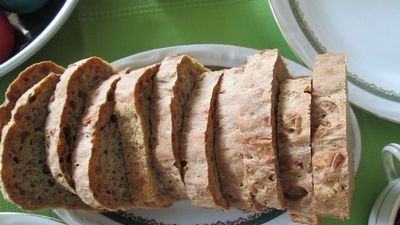 Since time immemorial, Russian rolls, gingerbreads, dumplings, Ukrainian dumplings, knisha, dumplings, donuts, grechaniks, Tatar belyashi, gubadii, teche have been known in our Fatherland. koymaki, Belarusian cakes, sachni, lyapuny and many, many other flour products. Groats are not inferior to them either in variety, or in taste and nutritional qualities. Folk memory and recipe reference books of ancient times have preserved a myriad of ways to prepare cereals, stews, soups, jelly, which today is not a sin to appear on our table both on holidays and on weekdays. Since time immemorial, Russian rolls, gingerbreads, dumplings, Ukrainian dumplings, knisha, dumplings, donuts, grechaniks, Tatar belyashi, gubadii, teche have been known in our Fatherland. koymaki, Belarusian cakes, sachni, lyapuny and many, many other flour products. Groats are not inferior to them either in variety, or in taste and nutritional qualities. Folk memory and recipe reference books of ancient times have preserved a myriad of ways to prepare cereals, stews, soups, jelly, which today is not a sin to appear on our table both on holidays and on weekdays.
And this memory, fortunately, is great. Even in ancient Moscow, the Tatar embassies, for example, were treated to their own national dishes, prepared by Russian chefs with knowledge of the matter.Cooking became part of diplomacy. And at the level of communication of ordinary people, it is still considered very prestigious to feed the guest with what his soul is in, and thereby show respect for his national feelings and customs. Russian people have always been able to do this. But he also shared his experience with heartfelt generosity. Let us recall at least the Decembrists who taught the peoples of Siberia to grow previously unknown agricultural crops and prepare delicious dishes from them - after all, this is a historical fact. Well, and even in the culinary arts of the Slavic peoples of our Fatherland, the mutual experience of the culinary art has become so intertwined over many centuries that the same dishes differ in different areas only by name.
"Bread and feed, bread and drink," - said in the old days. And not in vain, because some cereals are suitable for preparing a wide variety of drinks - intoxicating, thirst-quenching and refreshing, tonic, curative and prophylactic, and simply tasty, healthy.
With regard to the nutritional value and energy return from the consumption of cereals in the diet, it will be helpful for the reader to recall some data. As you know, proteins contained in food are, roughly speaking, "building materials" for cells and tissues of our body, and carbohydrates and fats serve as energy sources for it.
And here is how other grain products look in terms of the main indicator (starch content): barley groats - 82% per 100 g, pearl barley - 85, corn - 86, legumes - up to 56%.
But in addition to this energy source, cereals and legumes carry a significant set of other nutrients and stimulating substances into the human body. So, legumes supply him with nucleoproteins, that is, complex phosphorus-containing proteins that are not even in milk, eggs, cereals, fruits and vegetables, but without which the formation of cell nuclei of living organisms is difficult.
The unique nutritional benefits of grains and legumes are difficult to list even briefly. But it is impossible, for example, not to dwell on such of them as the rich content of glutamic amino acid in cereals, the role of which in the life of the human body is indispensable and which it absorbs from food almost completely.
However, he synthesizes it himself, but this is not enough, and he needs to receive about 20 g of this acid per day with food. Without this substance, the harmful product of the vital activity of cells, ammonia, will not be neutralized, and the process of assimilation of fats and carbohydrates will not be active. It is characteristic that during nervous stress or very strenuous work in some people, their own synthesis of glutamic amino acid drops sharply, so they are recommended to eat more bread than usual during this period.
Of course, proteins of animal origin also contain this acid, but they contain half of it than, for example, in full-fledged wheat varieties. The proteins of the latter are extremely rich in it - more than 30 g per 100 g of protein! As you can see, this is more than the daily norm. But the "surpluses" that are not involved in the processes mentioned above do not disappear at all, but serve the body as an additional source of energy.
Despite this advantage over animal proteins, proteins of cereals are still inferior to them in nutritional value, and mainly due to a lack of lysine. But he, which is considered the most important of amino acids and controls many functions of life, is present in cereals: in oat protein - 3.8, barley - 3.2, wheat - 2.8, corn - 2.5%. Note that oats and barley was not far behind the 5.3% average lysine content in animal protein.
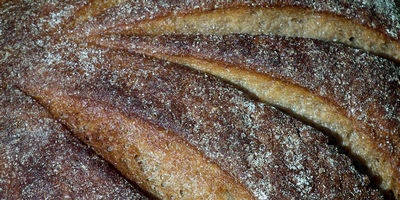 It is known that the body has nowhere else to take fiber, which is absolutely necessary for us for normal digestion, as from plant foods, and above all from coarse breads, legumes, corn, etc. By the way, corn supplies us, in particular, glucose and carotene. Sprouted cereal grains - maltose and vitamin E stimulating sexual activity.Oats, sunflower, soy - the most valuable vegetable fats, rich in the same biological stimulant, especially soy, whose oil is the same vitamin E, although, of course, not yet refined. It is known that the body has nowhere else to take fiber, which is absolutely necessary for us for normal digestion, as from plant foods, and above all from coarse breads, legumes, corn, etc. By the way, corn supplies us, in particular, glucose and carotene. Sprouted cereal grains - maltose and vitamin E stimulating sexual activity.Oats, sunflower, soy - the most valuable vegetable fats, rich in the same biological stimulant, especially soy, whose oil is the same vitamin E, although, of course, not yet refined.
Cereals are often dozens of times superior to animal products in tocopherol content (the scientific name for vitamin E). As you know, an adult needs to consume it 20-30 mg per day. This means that, being deprived of the opportunity to eat plant foods, he would have to eat at one sitting to cover the need, or 1250 g beef, or 1700 g of sea fish, or 30 pieces of eggs, or 1000 g of butter, or 12.5 liters of milk. But even if he is allowed to switch in his diet only to vegetables, in which vitamin E is some 1.5-2.0 mg%, then he will have to eat at least one and a half kilograms of vegetables per day.
But how advantageous grain products look in this regard. The average amount of tocopherol required by a person can be obtained per day either from 150 g of oats, or from 250 g of rye, or from 250 g of corn, or from 350 g of wheat, or from 500 g of legumes. But even in the absence of the opportunity to receive these products in the diet, a person can satisfy the daily need for vitamin E by consuming 1.5 tablespoons of vegetable oil. This is at least the opinion of a famous scientist, Professor K. Petrovsky.
The beneficial effects of tocopherol on vital processes go far beyond the stimulation of sexual functions. In particular, according to the professor, "Lack of vitamin E leads to muscle dystrophy"... And according to Dr. J. Bland of the University of Tacoma, Washington, the most remarkable property of vitamin E is the ability to prevent premature aging of human red blood cell cells. The fact is that cell membranes, which have as their component fatty substances - lipids, are destroyed due to the oxidation of the latter under the influence of light and oxygen, and tocopherol, being a powerful antioxidant, prevents this.
And more about the vitamins contained in cereals. The one denoted as B1 and affects the growth of the body, metabolism and nervous activity, we get enough from rice, rye, buckwheat, legumes, and the latter also add B2, also responsible for growth, metabolism, and oxidation and reduction processes. The body receives vitamin B from the embryos and shell of cereals.6, which, along with a beneficial effect on nervous activity and protein-fat metabolism, is involved in the formation of vital enzymes. From the same shells and from coarse bread, we extract vitamin PP, which affects the condition of the skin, nervous activity and especially digestion, since it has the ability to expand blood vessels and thereby accelerate the absorption of nutrients.
The minerals contained in cereals are also extremely valuable in terms of nutrition. For example, without such an element as potassium, which regulates the metabolism in cells and the water content in them, our body could not exist at all. Along with other products, potassium is supplied to him to a large extent from oatmeal, legumes, soy flour. Without sulfur, as you know, there are no many living proteins, but legumes and cereals supply us with this element. They also give us the necessary amount of zinc, an active destroyer of excess carbon dioxide and a regulator of sexual functions. He (in "commonwealth" with buckwheat) is able to supply us with magnesium, which promotes the assimilation of many minerals, as well as manganese, which stimulates the sexual functions and the activity of the mammary glands.
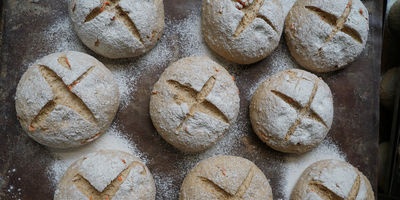 About how serious a problem the undersupply in the body, for example, zinc, is becoming, expressed in a scientific journal "Chemistry in Great Britain" Professor Derek Smith. He directly connects with him "Sexual coldness" and sexual indifference, which is sometimes mistaken for a "character trait."It turns out that it is not in the nature of the matter, but in the absence of a stimulant effect on the biological processes that cause sexual activity. About how serious a problem the undersupply in the body, for example, zinc, is becoming, expressed in a scientific journal "Chemistry in Great Britain" Professor Derek Smith. He directly connects with him "Sexual coldness" and sexual indifference, which is sometimes mistaken for a "character trait."It turns out that it is not in the nature of the matter, but in the absence of a stimulant effect on the biological processes that cause sexual activity.
Even from this very cursory description of the merits of cereals, it is not difficult to conclude that they form the basis of a complete diet. It is only important that these foods are presented in a sufficiently diverse set in the diet. Then the hostess is given a wide maneuver of their use so that the dishes of the family table have all the necessary nutritional qualities, both in calorie content and in the content of biologically active substances.
Of course, products and dishes only from cereals are usually not served at the table. And this is very reasonable, because in combination with other food components, they show their useful advantages even more efficiently, and in addition, they contribute to a better "return" of nutrients to the body from all food entering it. So, well-baked bread (that is, fluffy and porous) extraordinarily enhances the activity of the digestive organs and makes them more fully absorb nutrients from any other food.
How not to recall the popular saying: "Bread is a gift of God, father, breadwinner".
The conclusion suggests itself: you should not get carried away with pasta in your diet, despite their high calorie content, and white bread should hardly be given more preference than rye.
B.P. Brusilov - Culinary savvy
|
 Not everyone, probably, wondered how the word was formed in our language "slurp"... And it owes its origin to the word "bread". Why?
Not everyone, probably, wondered how the word was formed in our language "slurp"... And it owes its origin to the word "bread". Why? The testimonies of foreign military doctors who, visiting the hospitals of the tsarist army in the last century, were amazed at the fact that the wounded soldiers are completely satisfied with bread, kvass and onions, and occasionally porridge, are also interesting, and, moreover, they recover well. This is what eating traditions mean, when the body has the genetic ability to absorb all the necessary nutrients from a rather meager group of foods.
The testimonies of foreign military doctors who, visiting the hospitals of the tsarist army in the last century, were amazed at the fact that the wounded soldiers are completely satisfied with bread, kvass and onions, and occasionally porridge, are also interesting, and, moreover, they recover well. This is what eating traditions mean, when the body has the genetic ability to absorb all the necessary nutrients from a rather meager group of foods. Since time immemorial, Russian rolls, gingerbreads, dumplings, Ukrainian dumplings, knisha, dumplings, donuts, grechaniks, Tatar belyashi, gubadii, teche have been known in our Fatherland.
Since time immemorial, Russian rolls, gingerbreads, dumplings, Ukrainian dumplings, knisha, dumplings, donuts, grechaniks, Tatar belyashi, gubadii, teche have been known in our Fatherland.  It is known that the body has nowhere else to take fiber, which is absolutely necessary for us for normal digestion, as from plant foods, and above all from coarse breads, legumes, corn, etc. By the way, corn supplies us, in particular, glucose and carotene. Sprouted cereal grains - maltose and vitamin E stimulating sexual activity.Oats,
It is known that the body has nowhere else to take fiber, which is absolutely necessary for us for normal digestion, as from plant foods, and above all from coarse breads, legumes, corn, etc. By the way, corn supplies us, in particular, glucose and carotene. Sprouted cereal grains - maltose and vitamin E stimulating sexual activity.Oats,  About how serious a problem the undersupply in the body, for example, zinc, is becoming, expressed in a scientific journal "Chemistry in Great Britain" Professor Derek Smith. He directly connects with him "Sexual coldness" and sexual indifference, which is sometimes mistaken for a "character trait."It turns out that it is not in the nature of the matter, but in the absence of a stimulant effect on the biological processes that cause sexual activity.
About how serious a problem the undersupply in the body, for example, zinc, is becoming, expressed in a scientific journal "Chemistry in Great Britain" Professor Derek Smith. He directly connects with him "Sexual coldness" and sexual indifference, which is sometimes mistaken for a "character trait."It turns out that it is not in the nature of the matter, but in the absence of a stimulant effect on the biological processes that cause sexual activity.




